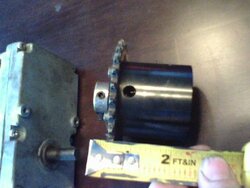In the industrial control industy we have to protect motors from failing due to overloads undervoltage etc...
Wouldn't it make sense to protect the auger gearmotor (the one most likely to overloading) from over loads and how would you guy's go about it.......
I already have a solution but just wondering what everyone else thinks :coolsmirk:
Wouldn't it make sense to protect the auger gearmotor (the one most likely to overloading) from over loads and how would you guy's go about it.......
I already have a solution but just wondering what everyone else thinks :coolsmirk:



